


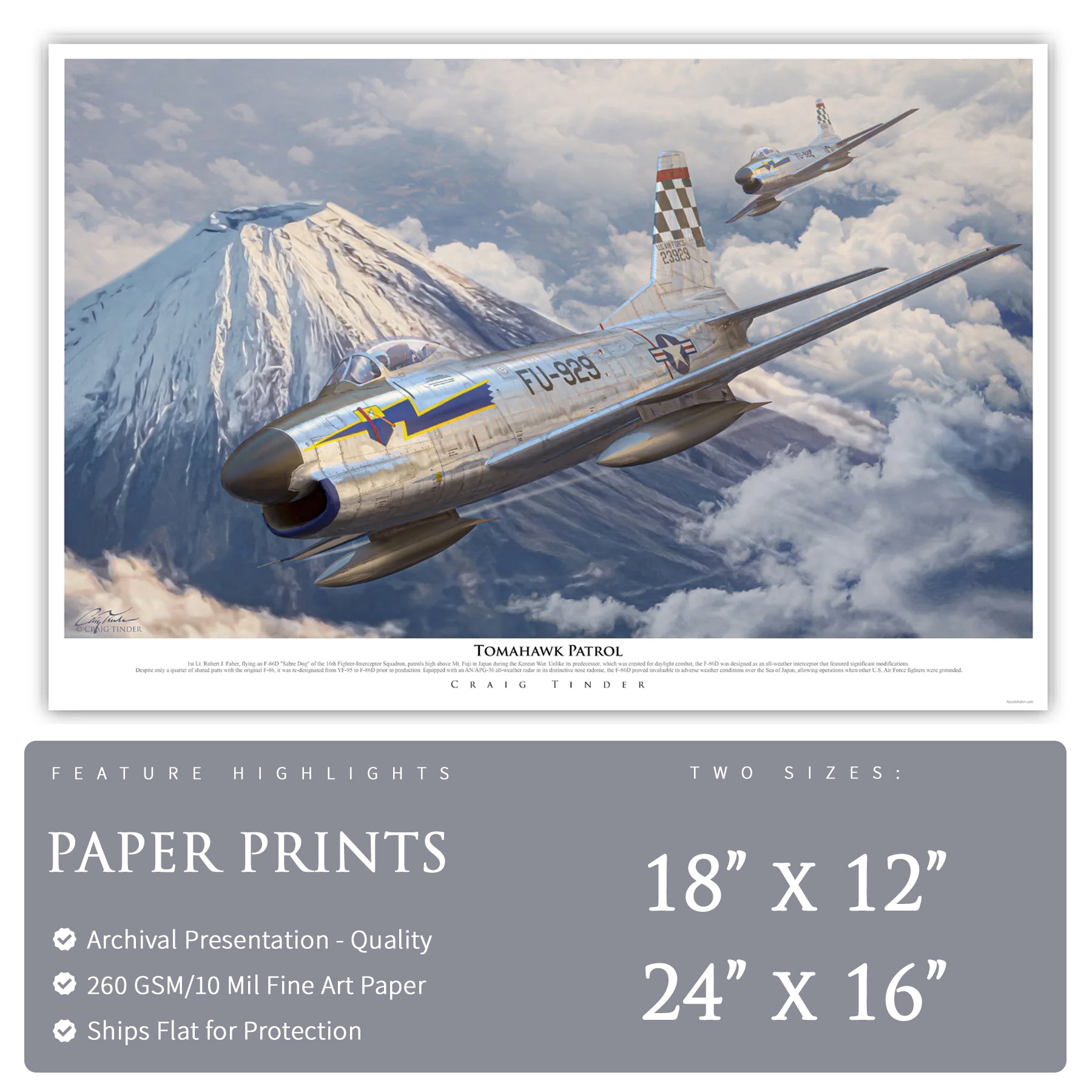
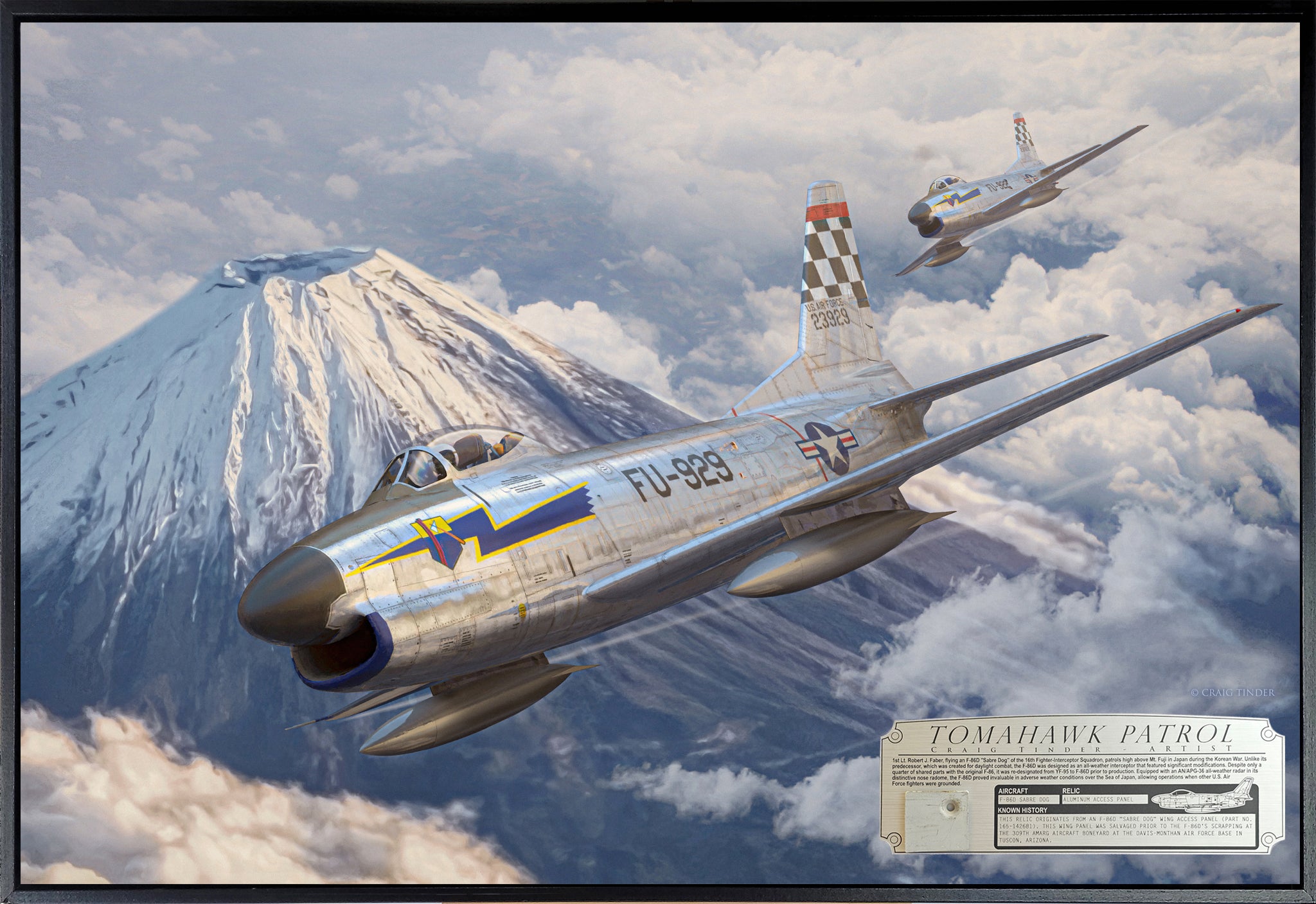
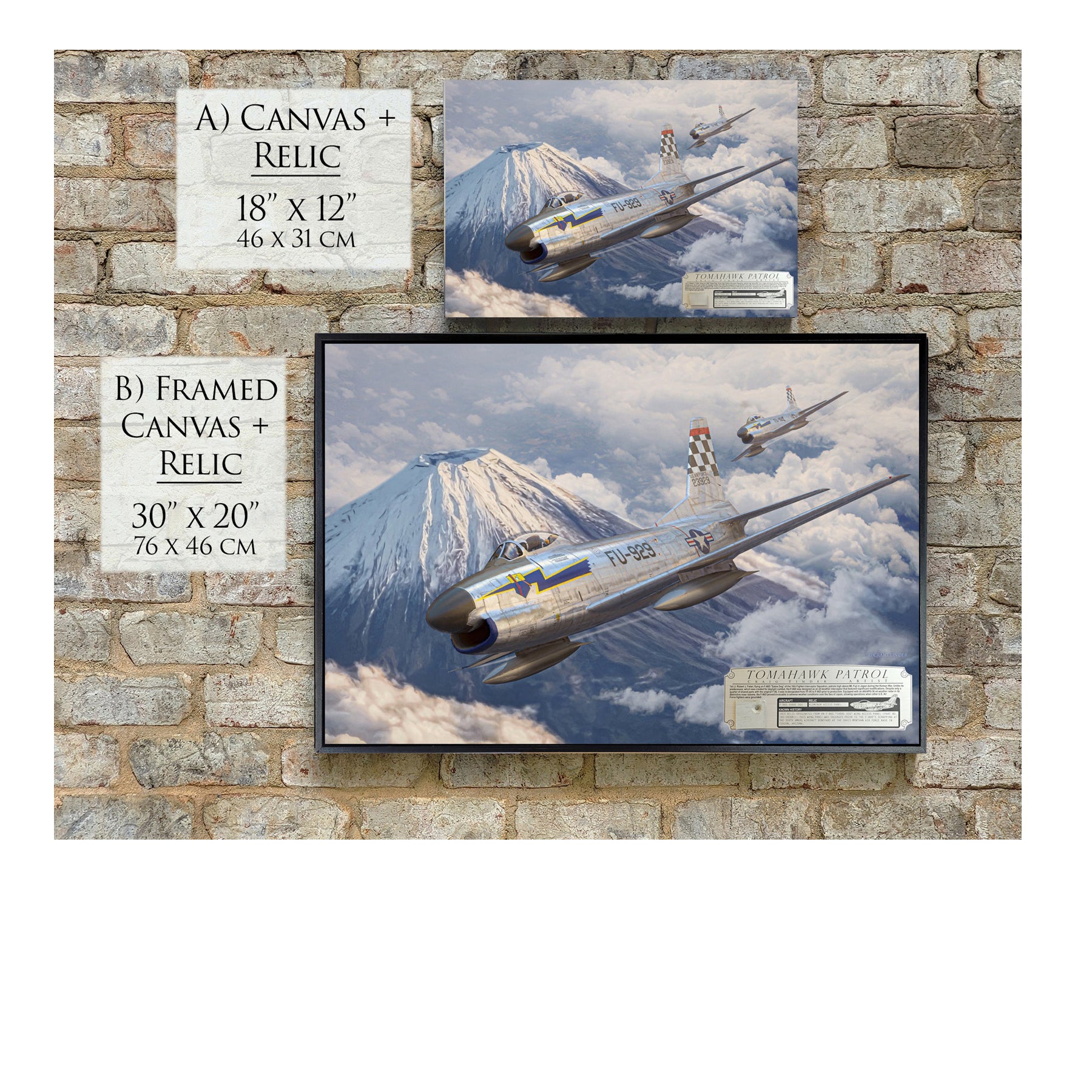
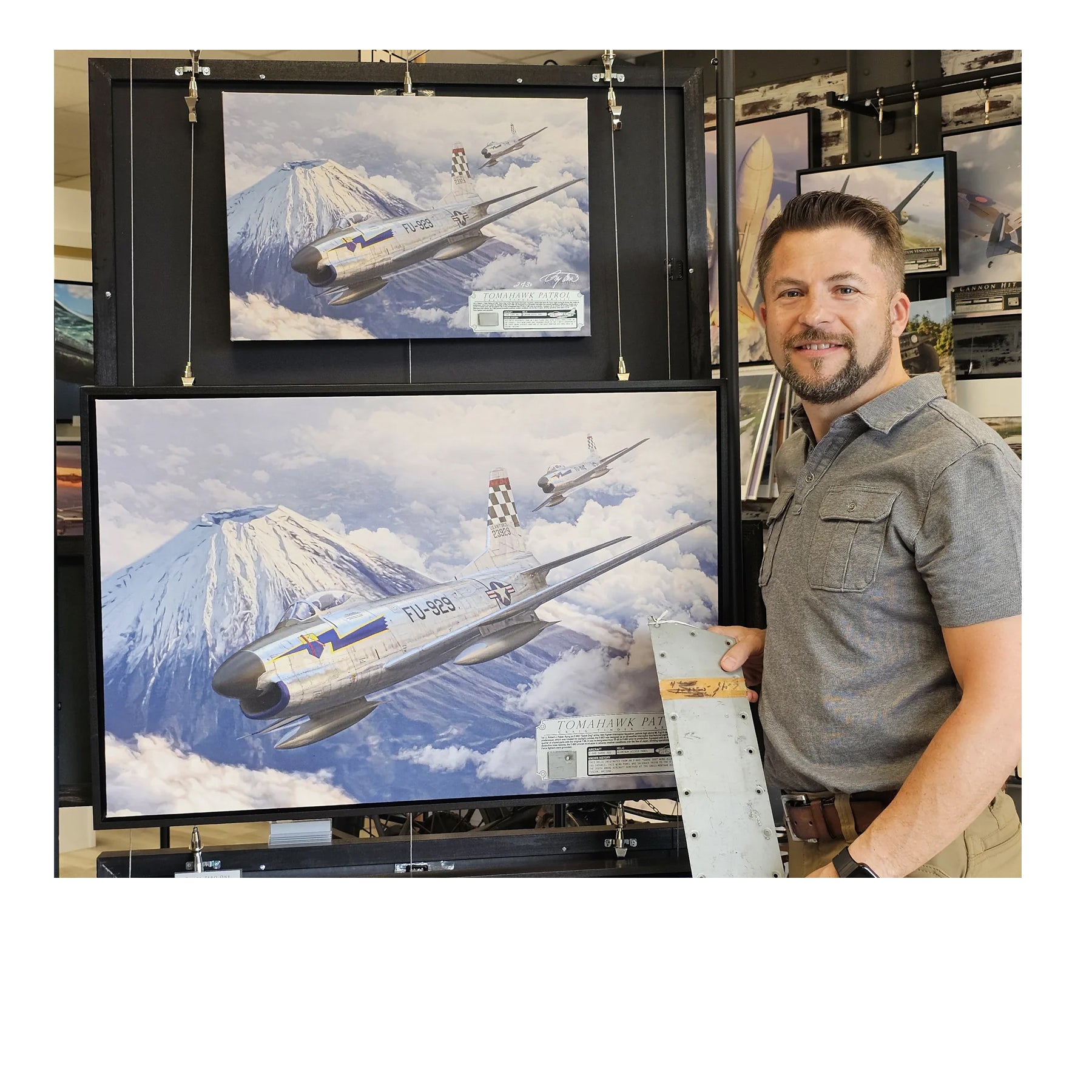

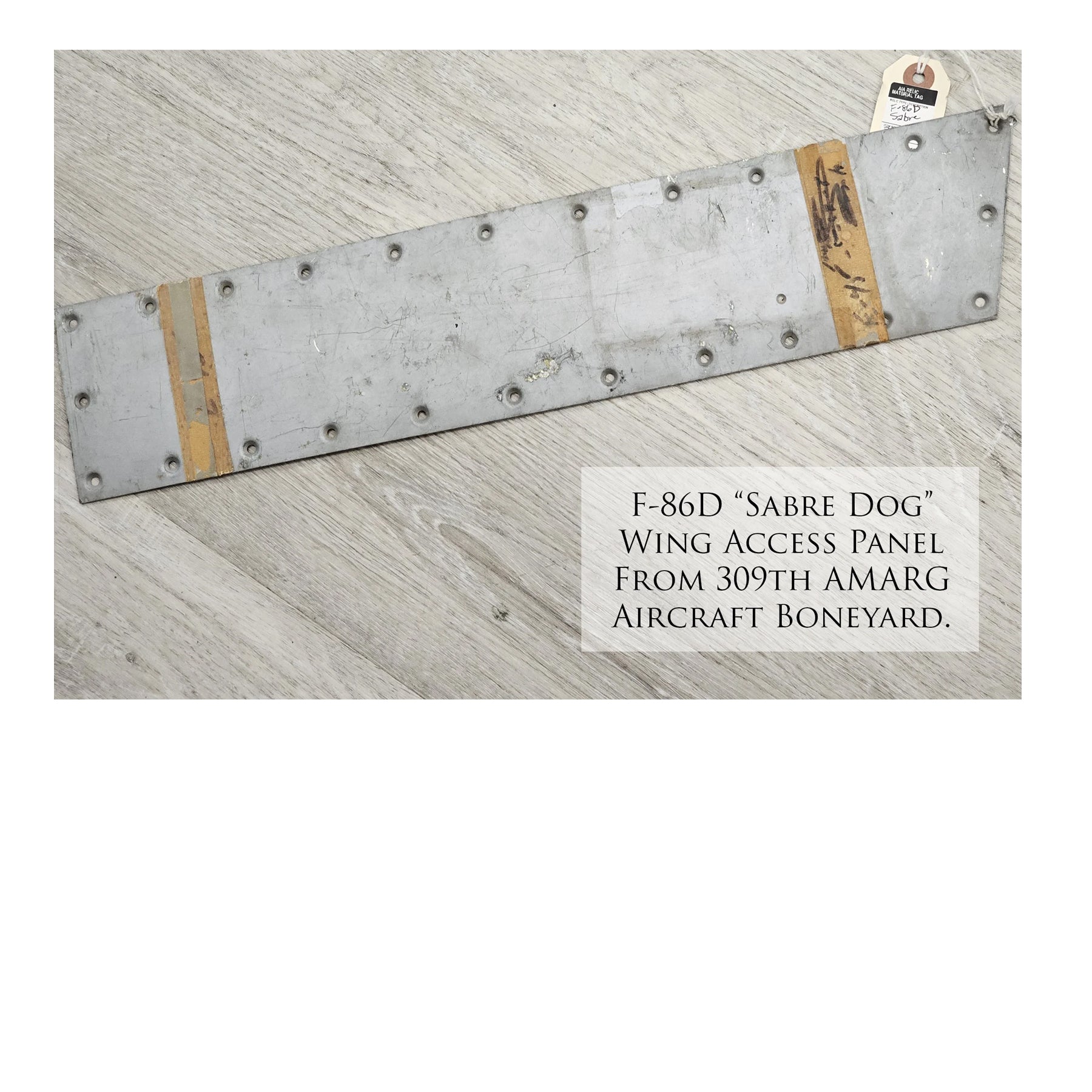


F-86 Sabre Dog - Tomahawk Patrol Canvas | INCLUDES: Wing Access Panel Fragment

F-86 Sabre Dog - Tomahawk Patrol Canvas | INCLUDES: Wing Access Panel Fragment
If you have any questions, you are always welcome to contact us. We'll get back to you as soon as possible, within 24 hours on weekdays.
Shipping Information
Use this text to answer questions in as much detail as possible for your customers.
Customer Support
Use this text to answer questions in as much detail as possible for your customers.
FAQ’s
Use this text to answer questions in as much detail as possible for your customers.
Contact Us
Use this text to answer questions in as much detail as possible for your customers.
Description
About the Relic & Process
This relic comes from the wing access panel of an F-86D "Sabre Dog" (Part No. 165-142681), a variant of the legendary F-86 Sabre series that was modified specifically for all-weather, interceptor missions during the Cold War. The F-86D was equipped with advanced radar systems and a distinctive nose-mounted radar cone, making it a critical part of the U.S. Air Force's defense against potential Soviet bomber threats. The panel was salvaged prior to the scrapping of the aircraft at the 309th AMARG Aircraft Boneyard at Davis-Monthan Air Force Base in Tucson, Arizona, which is the largest aircraft storage and preservation facility in the world.
 Wing access panel that is used as the relic included in the "Tomahawk Patrol" limited edition prints
Wing access panel that is used as the relic included in the "Tomahawk Patrol" limited edition prints
The F-86D was developed to counter high-speed, high-altitude bombers with its advanced onboard radar and air-to-air rockets housed in a retractable tray. It played an important role in the 1950s and early 1960s as part of the Air Defense Command (ADC), ensuring the safety of U.S. airspace during the tense years of the Cold War.
 Artist, Craig Tinder, with the relic and "Tomahawk Patrol" limited edition prints
Artist, Craig Tinder, with the relic and "Tomahawk Patrol" limited edition prints
This access panel, now preserved as a relic, represents a piece of aviation history, offering a direct connection to the cutting-edge aircraft technology of the time and the strategic efforts to protect U.S. airspace during a period of high global tension. The 309th AMARG, where the F-86D was stored and ultimately scrapped, continues to serve as a vast repository of retired military aircraft, each with a unique history of service and significance.
Disclaimer
By purchasing from Aces In Action, you acknowledge that the product may vary slightly from the images on our website. We use authentic materials from military vehicles and relics, which may contain potentially hazardous substances. These items are not intended for ingestion, inhalation, or use by children. Aces In Action is an independent company, unaffiliated with or endorsed by any other organization. All names, logos, and trademarks are the property of their respective owners and are used for identification only, in accordance with the Lanham Act. Their use does not imply any official endorsement.
